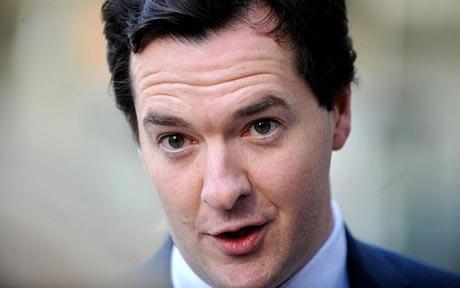Chancellor George Osborne is set to unveil details of this year’s Budget, which many experts predict will be his toughest to date as the Treasury looks to make an additional £4 billion in savings before the end of the current parliament. Controversial decisions made last year include the additional 3% on stamp duty, details of […]
 Chancellor George Osborne is set to unveil details of this year’s Budget, which many experts predict will be his toughest to date as the Treasury looks to make an additional £4 billion in savings before the end of the current parliament.
Chancellor George Osborne is set to unveil details of this year’s Budget, which many experts predict will be his toughest to date as the Treasury looks to make an additional £4 billion in savings before the end of the current parliament.
Controversial decisions made last year include the additional 3% on stamp duty, details of which will be announced on Wednesday.
So it is no wonder that some in the property industry are nervous about an additional attack on the buy-to-let sector.
Richard Donnell, insight director at Hometrack, said the Chancellor needs to address the impact of stamp duty on below average levels of housing turnover.
“At some point the Chancellor will need to address the impact of stamp duty on below average levels of housing turnover. Currently it is helping to create scarcity of supply, adding to the upward pressure on house prices and compounding the plight of first-time buyers trying to get on the housing ladder. In southern England the tax creates a significant drag effect on transactions but equally it generates a lot of money each year in tax receipts.
“Despite an uplift in sales the average household still only moves home just once every 19 years compared to every eight years in 1989. The government needs to consider the economic consequences of low housing turnover and whether a change in the taxation of property, perhaps more council tax bands for higher value homes, can support improved housing liquidity.”
Paragon has called on the Chancellor to make no further changes to the taxation of landlords and instead deliver a comprehensive strategy to meet the housing needs of the country’s growing population.
Nigel Terrington, Paragon Group chief executive, said: “The size of forecast population growth is the equivalent of nine cities the size of Birmingham.
“The private rented sector is an important provider of homes for people in the UK. For many years, successive governments have actively reduced the provision of social housing. This, together with other regulatory changes such as the Mortgage Market Review which has restricted mortgage credit to homebuyers, mean more people are turning to the private rented sector.
Terrington said there was a real risk of lasting damage to the sector if the impact of the changes was not fully understood.
He added: “In the context of forecast population growth, together with a current and projected housing shortage, the key requirement is for the government to create a stable policy framework that will encourage investment in the supply of good quality, affordable housing across all tenures, so that people can choose the best housing option to suit their lifestyle.”
Paula Higgins, founder and chief executive of the HomeOwners Alliance, is expecting to see further detail on how the stamp duty surcharge on second homes will be implemented.
She said: “I’m looking forward to seeing the detail of how the stamp duty surcharge will work. This could be a great lever to help those wanting to buy a home to live in. Let’s hope the government listened to the concerns of both existing and aspiring home owners and makes changes that do not harm many of the very homeowners they are trying to help.
“Parents helping their children to buy, and those going through family breakdown should not be penalised. For example, if a couple separates and the man buys a flat close to the family home while he is still named on the mortgage of the original marital home then he will have to pay the 3% surcharge even though he is buying a home to live in.
“Downsizers may also suffer as the government is likely to insist that the 3% is paid upfront. It can then be claimed back when the original home sells. Homeowners thinking of downsizing could be deterred from selling as they may need to find additional thousands of pounds to complete their move.
“Buying and selling property is messy, costly and can take ages – the way the government wants to introduce this stamp duty reform will just make things worse and hurt those they are trying to help.”














